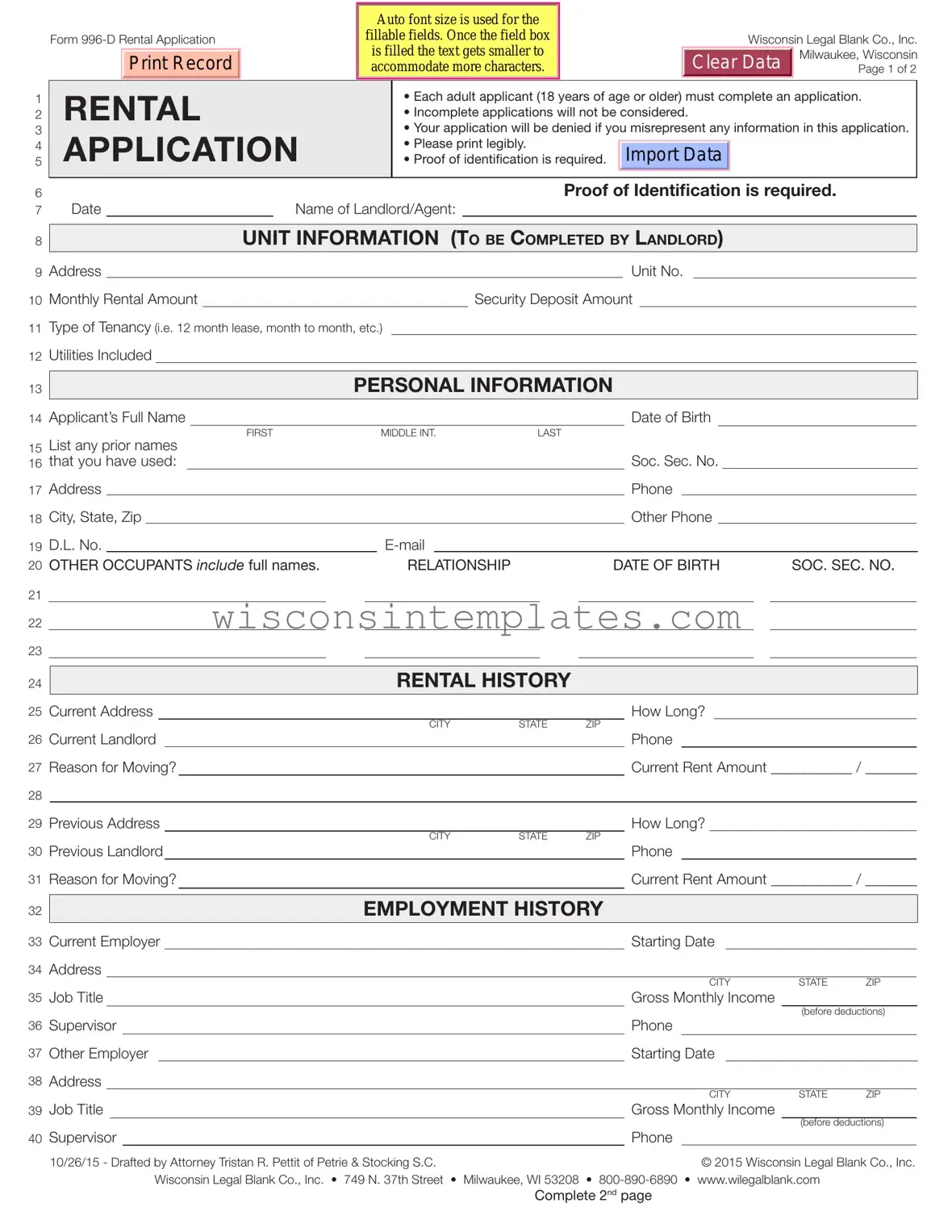The Wisconsin Rental Application form is an essential document for anyone looking to secure a rental property in the state. It requires each adult applicant to fill out their own application, ensuring that all necessary information is collected. The form emphasizes the importance of accuracy; any misrepresentation can lead to denial of the application. Applicants must provide proof of identification and complete all sections legibly to avoid any delays. Key sections include personal information, rental history, employment details, and financial information. Additionally, applicants need to disclose any other sources of income, credit references, and details about vehicles and pets. The form also includes a section for emergency contact information and a notice regarding the sex offender registry. Finally, it outlines the responsibilities of both the tenant and the landlord, including the requirement for a security deposit and the process for verifying the information provided. Understanding these components can help applicants navigate the rental process more smoothly.
